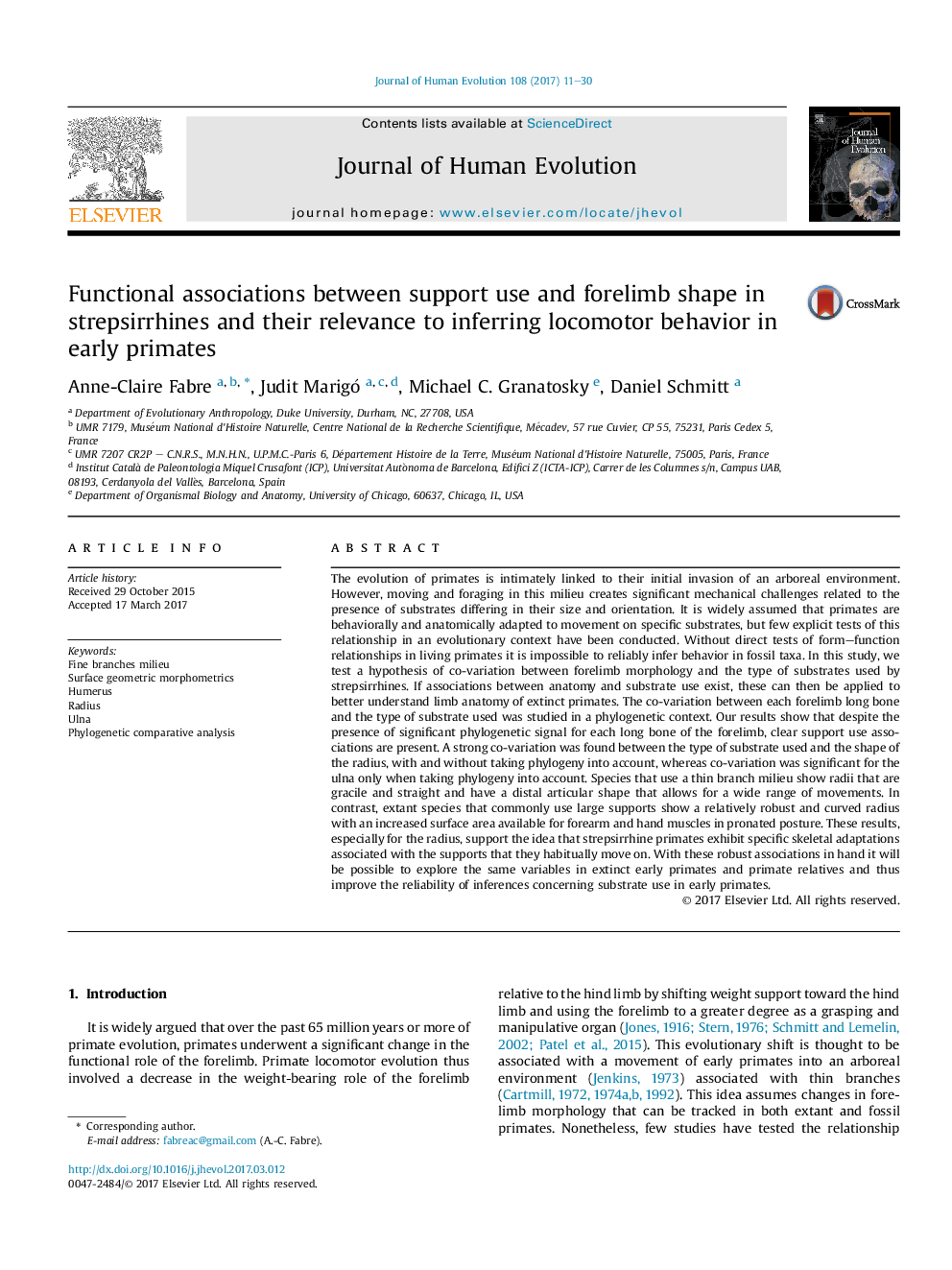| کد مقاله | کد نشریه | سال انتشار | مقاله انگلیسی | نسخه تمام متن |
|---|---|---|---|---|
| 5766823 | 1628141 | 2017 | 20 صفحه PDF | دانلود رایگان |
عنوان انگلیسی مقاله ISI
Functional associations between support use and forelimb shape in strepsirrhines and their relevance to inferring locomotor behavior in early primates
ترجمه فارسی عنوان
ارتباطات کاربردی بین استفاده از حمایه و شکل پیشانی در استرپسیرین ها و ارتباط آنها با نتیجه گیری رفتار حرکتی در پرندگان اولیه
دانلود مقاله + سفارش ترجمه
دانلود مقاله ISI انگلیسی
رایگان برای ایرانیان
موضوعات مرتبط
علوم زیستی و بیوفناوری
علوم کشاورزی و بیولوژیک
بوم شناسی، تکامل، رفتار و سامانه شناسی
چکیده انگلیسی
The evolution of primates is intimately linked to their initial invasion of an arboreal environment. However, moving and foraging in this milieu creates significant mechanical challenges related to the presence of substrates differing in their size and orientation. It is widely assumed that primates are behaviorally and anatomically adapted to movement on specific substrates, but few explicit tests of this relationship in an evolutionary context have been conducted. Without direct tests of form-function relationships in living primates it is impossible to reliably infer behavior in fossil taxa. In this study, we test a hypothesis of co-variation between forelimb morphology and the type of substrates used by strepsirrhines. If associations between anatomy and substrate use exist, these can then be applied to better understand limb anatomy of extinct primates. The co-variation between each forelimb long bone and the type of substrate used was studied in a phylogenetic context. Our results show that despite the presence of significant phylogenetic signal for each long bone of the forelimb, clear support use associations are present. A strong co-variation was found between the type of substrate used and the shape of the radius, with and without taking phylogeny into account, whereas co-variation was significant for the ulna only when taking phylogeny into account. Species that use a thin branch milieu show radii that are gracile and straight and have a distal articular shape that allows for a wide range of movements. In contrast, extant species that commonly use large supports show a relatively robust and curved radius with an increased surface area available for forearm and hand muscles in pronated posture. These results, especially for the radius, support the idea that strepsirrhine primates exhibit specific skeletal adaptations associated with the supports that they habitually move on. With these robust associations in hand it will be possible to explore the same variables in extinct early primates and primate relatives and thus improve the reliability of inferences concerning substrate use in early primates.
ناشر
Database: Elsevier - ScienceDirect (ساینس دایرکت)
Journal: Journal of Human Evolution - Volume 108, July 2017, Pages 11-30
Journal: Journal of Human Evolution - Volume 108, July 2017, Pages 11-30
نویسندگان
Anne-Claire Fabre, Judit Marigó, Michael C. Granatosky, Daniel Schmitt,
